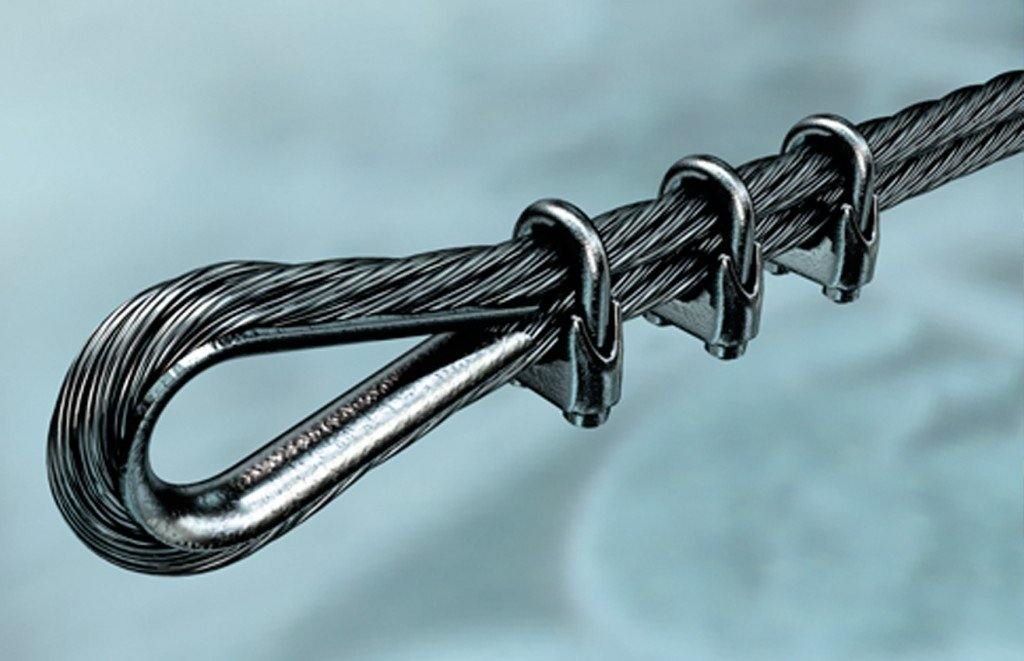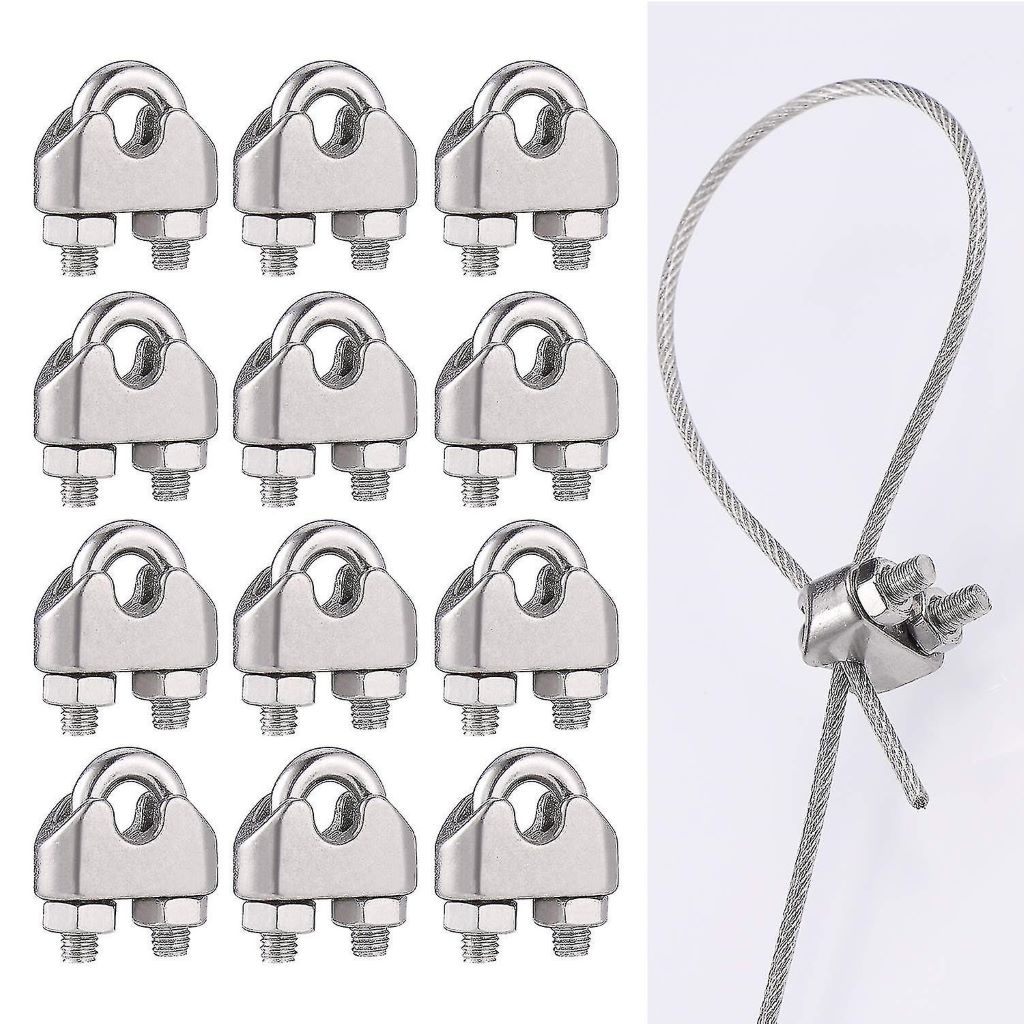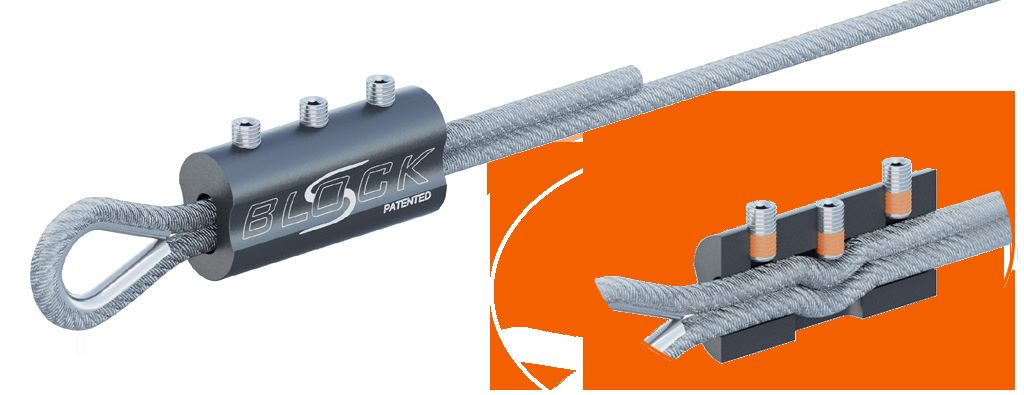How Many Cable Clamps on Wire Rope? Let’s Find Out!

Wondering how many cable clamps to use for securing a wire rope? It might seem like a simple task, but choosing the right number of clamps is essential for safety and effectiveness. In this detailed guide, we’ll explore the factors that influence the number of cable clamps you need, provide a step-by-step process for calculating the ideal quantity, and answer some common questions to help you make the best choice for your wire rope project.
Why Are Cable Clamps Important?
Before we dive into the specifics, let’s briefly discuss why cable clamps are crucial when working with wire ropes. Cable clamps, also known as wire rope clips or U-bolt clamps, serve two primary purposes:
- Securing the Wire Rope: Cable clamps prevent the wire rope from unraveling or slipping out of attachments, ensuring the safety of your load and those around it.
- Maintaining Cable Integrity: They help maintain the structural integrity of the wire rope by distributing the load evenly and minimizing stress concentrations.
To ensure a successful wire rope project, it’s crucial to determine the appropriate number of cable clamps based on your wire rope’s diameter. Keep in mind that the number of clamps required varies and can be found on a wire rope clamp size chart.
Factors That Influence the Number of Cable Clamps
Several factors influence the number of cable clamps required for a particular wire rope application. These factors include:
- Wire Rope Diameter: The thickness of your wire rope plays a significant role in determining the number of cable clamps needed. Thicker ropes generally require more clamps to secure effectively.
- Load and Tension: The weight or load that the wire rope will carry is a critical factor. Heavier loads create more tension, necessitating additional clamps for secure fastening.
- Safety Regulations: Depending on your industry and location, there may be specific safety regulations or standards that dictate the minimum number of clamps required for different wire rope sizes and loads. Always adhere to these guidelines to ensure safety and compliance.
- Clamp Type: The type of cable clamp you choose can affect the number needed. Different designs and sizes may have varying gripping capacities.
Now, let’s break down the step-by-step process for calculating the ideal quantity of cable clamps for your wire rope project.
Step-by-Step Guide to Calculating the Number of Cable Clamps
Follow these steps to determine the correct number of cable clamps needed for your wire rope project:
Step 1: Measure the Wire Rope Diameter
Use a caliper or a measuring tape to determine the diameter of your wire rope accurately. Measure from the outer edge of one side to the opposite outer edge.
Step 2: Identify the Load and Tension
Calculate or determine the maximum load or tension that your wire rope will experience during its intended use. This load should be specified in pounds (or kilograms).
Step 3: Check Safety Regulations
Consult industry-specific safety regulations or standards to ensure compliance. These standards may provide guidelines on the minimum number of cable clamps required for your wire rope size and intended load.
Step 4: Select a Cable Clamp Type
Choose the type of cable clamp that best suits your project. There are two common types:
- Simplex Cable Clamps: These are designed for light to moderate loads.
- Duplex Cable Clamps: These are suitable for heavy loads and offer more secure fastening.
Step 5: Determine the Required Spacing
Calculate the spacing between each cable clamp. A general rule of thumb is to place clamps at a distance of 6 to 8 times the wire rope diameter.
Step 6: Round Up
Always round up the calculated number to the nearest whole number. It’s better to have an extra clamp for added security.
Step 7: Secure the Clamps Properly
Once you’ve determined the required number of cable clamps, make sure to install them correctly. Follow the manufacturer’s instructions and use a torque wrench to achieve the recommended tightening torque.
Step 8: Inspect Regularly
Periodically inspect your wire rope and cable clamps for signs of wear, corrosion, or loosening. Proper maintenance ensures the continued safety and reliability of your setup.
FAQs (Frequently Asked Questions)
- What happens if I use too few cable clamp on my wire rope?
Using too few cable clamp can lead to a dangerous situation where the wire rope may slip or unravel under load. This can result in accidents, damage to your equipment, and potential injury to personnel. Always follow safety guidelines and use the correct number of clamps. - Can I use more cable clamp than the calculated minimum?
Yes, you can use more cable clamp if you want to enhance safety and security. It’s generally advisable to err on the side of caution and use a few extra clamps, especially if you’re unsure about the load or if the wire rope is subjected to dynamic forces. - Are there any alternatives to cable clamp for securing wire ropes?
Yes, there are alternatives like swage sleeves and wedge sockets. However, the choice depends on your specific application and preferences. Cable clamp are a cost-effective and versatile option for many situations. - Can I reuse cable clamp?
It’s not recommended to reuse cable clamp. Once they have been torqued to the recommended level, they can deform and lose their effectiveness. To ensure safety and reliability, always use new clamps when reassembling a wire rope. - What is the difference between simplex and duplex cable clamp?
Simplex cable clamps are designed for lighter loads and are typically used in less demanding applications. Duplex cable clamp are stronger and better suited for heavier loads. Choosing the right type depends on the weight your wire rope will bear.
Conclusion
Determining the correct number of cable clamp for your wire rope project is essential for safety and functionality. By considering factors such as wire rope diameter, load, safety regulations, and clamp type, you can calculate the ideal quantity of clamps required to effectively tie a rope to pull a tree. Always follow safety guidelines, install the clamps properly, and inspect your setup regularly to ensure the continued reliability of your wire rope system. Remember, it’s better to use a few extra clamps than to risk an unsafe situation.










